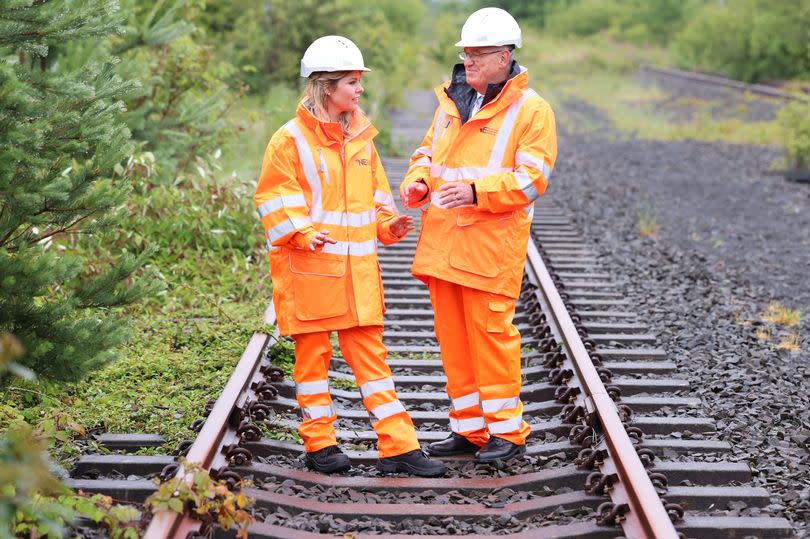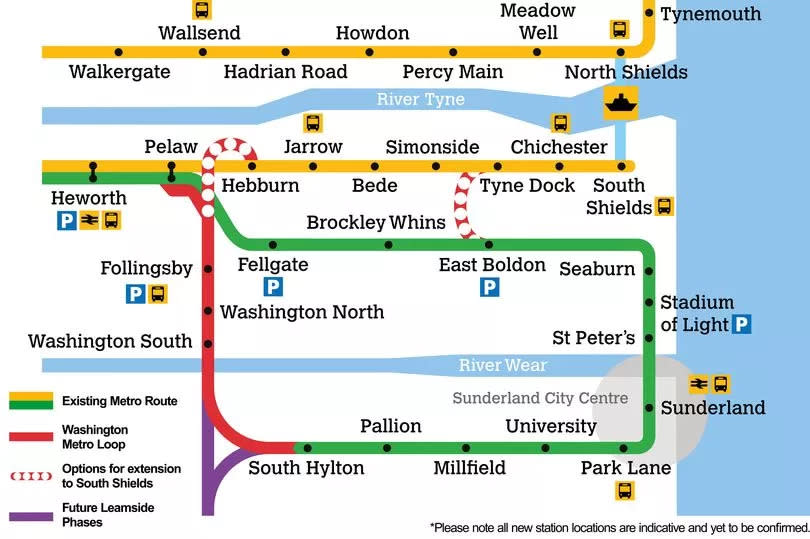The Washington Metro Loop explained: Map, new stations, and what it will cost

Plans to finally take the Tyne and Wear Metro to Washington are set to take a big step forward this month.
North East mayor Kim McGuinness announced on Wednesday that she will put more than £8 million into efforts to extend the Metro and restore the mothballed Leamside railway line. While the huge transport upgrade is still years away from becoming a reality, hope is growing that it can be delivered after years of campaigning.
Taking the Metro to Washington and unlocking the wider rail links that Leamside offers would be a huge boost to the North East and has been hailed as something that could truly change lives. This is what you need to know about the plans.
Read More: Mayor vows to bring Tyne and Wear Metro to Washington with £8m boost for Leamside Line restoration
Where would the Washington Metro Loop go and where would trains stop?
The plans to expand the current Metro network would see trains carry on from the current terminus at South Hylton, cross the Victoria Viaduct, and then run through Washington, and Follingsby before connecting back to the Metro line at Pelaw. That would utilise the northern section of the former Leamside railway line, where passenger trains stopped running 60 years ago.
A map of how the loop could look shows three new station locations – Washington South, Washington North and Follingsby. However, these are only indicative locations and are not absolutely confirmed at this stage.
Washington is the fourth largest town in the UK without a rail link and there have long been calls to resolve that situation, while another key aim of the Metro extension is to offer better connections to the International Advanced Manufacturing Park in Washington and Follingsby Park industrial estate where Amazon is located. The map also shows potential future extensions that would allow trains to continue on from the Washington loop towards South Shields after reaching Pelaw and also a new connection between Tyne Dock and East Boldon, allowing for much quicker travel between Sunderland and South Shields.
Will trains go further south?
The Washington Metro Loop is seen as phase one of the Leamside Line’s restoration. The line runs all the way down to Tursdale in County Durham, through communities like Belmont and Shincliffe, and could be linked up to the East Coast Main Line (ECML). As well as offering the opportunity for passenger trains through that line, it would also provide an alternative route for freight trains and thereby increase capacity on the ECML – potentially allowing for more trains between the North East and London, Manchester or Birmingham.
There are also plans to reopen Ferryhill Station. If that happens, then it could allow for the Leamside Line to be connected up to the Stillington Line and pave the way for a new Tyne-Tees passenger rail service.

What is this new funding for?
A report is due to go to the North East Combined Authority cabinet later this month to formally approve the £8.6 million investment announced by mayor Kim McGuinness this week.
£8 million of that will be used to develop an outline business case for the Washington Metro Loop by 2026 – including full information on the route’s proposed stations and estimated costs. A further £600,000 will be used to commission an earlier-stage strategic outline case for Leamside South, the southern section of the line connecting to the East Coast Main Line.
What would reopening these lines cost and where will the money come from?
Previous estimates have put the cost of the Washington Metro Loop alone at £745 million. Restoring the whole of the Leamside Line would cost well in excess of £1 billion. That money is beyond the capacity of the North East mayor’s budget, so it would have to come from somewhere else.
Asking the government to pay for it is the obvious solution. Rishi Sunak’s administration briefly committed to it last year, but withdrew the Leamside Line from his Network North pledges less than 24 hours after the programme was announced. Labour has also refused to commit to delivering the Leamside Line at this stage, saying earlier this year that it would not “treat the people of the North East like fools” by making a promise it does not know it could keep.
Ms McGuinness, who made the Washington Metro Loop a key manifesto promise in her election campaign, said on Wednesday that she would be asking the new Labour government for funding but that regional transport officials will have to “think differently” and look at partnerships with private businesses to raise money too.
What are the benefits?
The Leamside Line is regularly described as the single most important piece of infrastructure that the North East needs. The benefits of returning railway services to communities that have not seen a train pass through their town for decades are clear.
But it is estimated that the Washington Metro Loop would generate at least £90 million per year in economic benefits for the region, reduce car journeys by 1.7 million a year and cut carbon emissions by 87,000 tonnes annually. Gateshead Council leader Martin Gannon has called that a “compelling case” for the government to stump up the funding to make it happen.
When could these new lines open?
This is a key question and one that we don’t have a definitive answer to yet. Working out the timescale for reopening is a part of the business case work that the mayor’s funding will now allow for.
However, a project of this scale is unquestionably years away from actually coming to fruition. The business case being prepared by Nexus is due to be completed by spring 2026, after which funding would need to be secured and then the necessary construction work carried out to build new stations and bring the railway tracks back into use.

 Yahoo News
Yahoo News 
